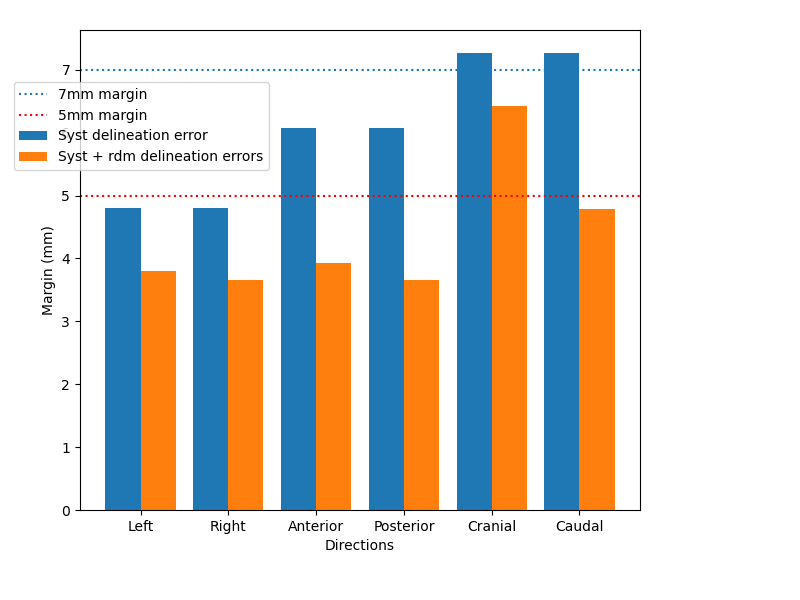Evaluation of PTV margins for CBCT-based prostate adaptive radiotherapy
PO-1921
Abstract
Evaluation of PTV margins for CBCT-based prostate adaptive radiotherapy
Authors: Florian Dupont1, David Dechambre2, Edmond Sterpin1,3,4
1UCLouvain, Center of Molecular Imaging, Radiotherapy and Oncology (MIRO), Brussels, Belgium; 2Cliniques Universitaires Saint-Luc, Radiotherapy department, Brussels, Belgium; 3KU Leuven, Department of Oncology, Laboratory of experimental radiotherapy, Leuven, Belgium; 4UZ Leuven, Particle Therapy Interuniversity Center Leuven (ParTICLe), Leuven, Belgium
Show Affiliations
Hide Affiliations
Purpose or Objective
Adaptive radiotherapy is characterized by the use of daily images to re-optimize the treatment plan before the delivery of each fraction based on the daily anatomy and position of the patient. By systematically re-delineating the Clinical Target Volume (CTV) and adapting the treatment at each fraction, target delineation uncertainty features a random component instead of a pure systematic one in a non-adaptive workflow.
The goal of this work is to identify and characterize all sources of errors and uncertainties in CBCT-based adaptive workflow and compute a new relevant PTV safety margin.
Material and Methods
A total of 169 radiotherapy sessions from 10 prostate cancer patients treated on the Varian ETHOS treatment system have been analyzed. For each of them, the CBCT images and the DICOM RTSTRUCT file containing the CTV contours were used to compute the systematic and random contributions of the delineation uncertainties. Intra-patient and inter-patient variabilities were computed in six directions, by considering the prostate as a rigid, non-rotating volume, in order to be able to directly compare the delineations done by the physicians on daily CBCT images with the initial delineation done on the CT-sim with the help of an MRI, and sort the directions using the polar coordinates of every point of each contour. The computed variabilities were then corrected for the prostate shape variations based on literature data (Deurloo et al. [2005]) and quadratically added to the random and systematic margin contributions, respectively. For machine-specific errors, the daily machine performance checks reports were used to evaluate the setup error and the convolution product of a parabola and a Gaussian functions was used to fit the measured dose profile of the beam at 10 cm in water in order to determine the penumbra contribution.
Results
A penumbra of 2.8mm and a systematic setup error of 0.3mm were calculated. Literature data (McPartlin et al. [2016]) was used for the intrafraction motion error to lower the statistical uncertainty linked to this component. Finally, the addition of the systematic and random contributions of the delineation error gives a total margin of 3.8, 3.7, 3.9, 3.7, 6.4 and 4.8mm in the left, right, anterior, posterior, cranial and caudal directions, respectively, which represents a reduction of 11 to 40% compared with the margin of 4.8, 6.1 and 7.3mm computed with a fully systematic delineation uncertainty of 1.7, 2 and 2.5mm in the LR, AP and CC directions, respectively.

Conclusion
According to our results, the gain offered by the separation of the delineation error into systematic and random contributions thanks to the adaptive delineation process justifies a reduction of the isotropic PTV margin from the commonly reported 7mm to 5mm. It could even be lowered down to 4mm in the left, right, anterior and posterior directions.